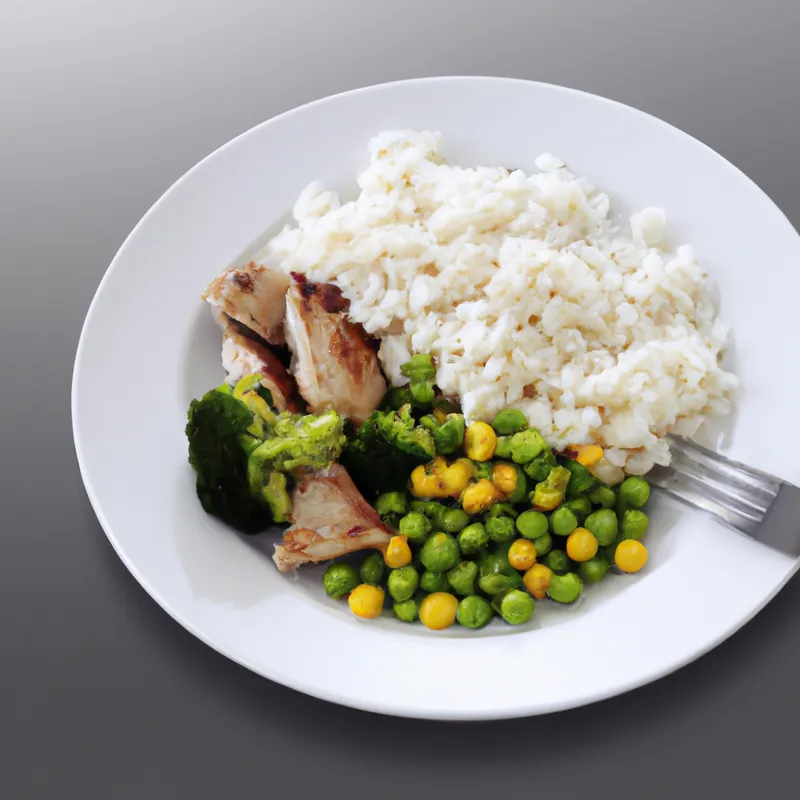Optimize Your Plate for Macros Tracking Effectively
Creating Balanced Meals Using the Plate Method for Macro Tracking
Maintaining a balanced diet supports your health and well-being. The Plate Method simplifies meal planning and helps you meet your nutritional needs. This approach aids in visualizing meals and tracking macronutrients (macros). In this post, we will explore how to create balanced meals using the Plate Method. We will include practical tips, advice, and benefits of this strategy.
Understanding the Plate Method
The Plate Method divides your plate into sections, helping you manage portion sizes and macronutrient distribution. Typically, this method suggests:
1. **Fill half of your plate with vegetables**: Include a variety of colorful vegetables for essential vitamins, minerals, fiber, and antioxidants.
2. **Allocate one quarter of your plate to protein**: Choose lean meats, fish, eggs, dairy, or plant-based proteins like beans and legumes. Protein supports muscle repair, immune function, and overall health.
3. **Fill one quarter of your plate with carbohydrates**: Focus on whole grains, starchy vegetables, or legumes for healthy energy. Carbohydrates serve as the body’s primary fuel source, especially for active individuals.
This method promotes a balanced approach, making it easier to visualize meals and transition to healthier choices.
Tips for Using the Plate Method
1. Choose Colorful Vegetables
Incorporate a variety of colorful vegetables into your meals. Dark leafy greens like spinach and kale provide iron and calcium. Bell peppers and tomatoes offer vitamin C and antioxidants. Aim for at least two different vegetables on your plate to maximize nutrient intake. Pair roasted broccoli with a side salad of mixed greens and cherry tomatoes. This combination enhances flavor and boosts nutritional value.
2. Select Lean Proteins
Opt for lean protein sources. Chicken breast, turkey, fish, tofu, and legumes like lentils or chickpeas work well. These options provide essential amino acids without excessive saturated fats. Including protein in your meals keeps you satiated and promotes muscle growth. For example, serve a grilled chicken breast with quinoa and steamed vegetables for a balanced meal.
3. Focus on Whole Grains
Prioritize whole grains in the carbohydrate section. Choose brown rice, quinoa, farro, and whole wheat pasta for fiber and nutrients. Whole grains support digestive health and maintain steady energy levels throughout the day.
Conclusion
Using the Plate Method helps you create balanced meals easily. Incorporate colorful vegetables, lean proteins, and whole grains for optimal nutrition.
Below are related products based on this post:
FAQ
What is the Plate Method for meal planning?
The Plate Method is a visual strategy that divides your plate into sections to help manage portion sizes and macronutrient distribution. It typically suggests filling half of your plate with vegetables, one quarter with lean protein, and one quarter with carbohydrates, promoting a balanced approach to meal planning.
How can I incorporate more vegetables into my meals?
To incorporate more vegetables, aim to include a variety of colorful options on your plate. Dark leafy greens, bell peppers, and tomatoes are great choices. Try pairing roasted broccoli with a mixed greens salad or adding different vegetables to stir-fries to enhance flavor and nutritional value.
Why are whole grains important in the Plate Method?
Whole grains are important because they provide essential fiber and nutrients that support digestive health and maintain steady energy levels. By prioritizing whole grains like brown rice, quinoa, and whole wheat pasta, you ensure your carbohydrate intake is healthy and beneficial for your overall well-being.















Post Comment